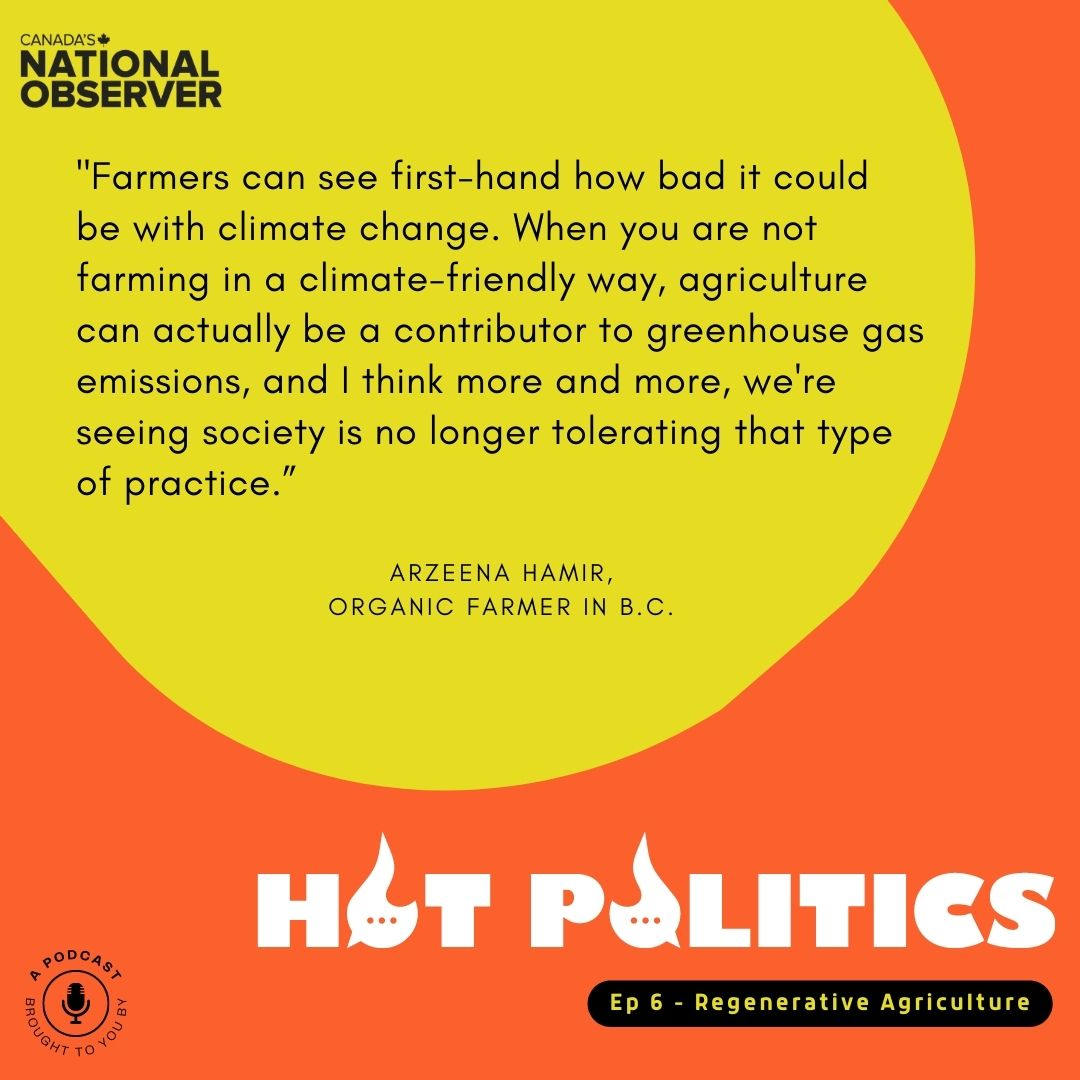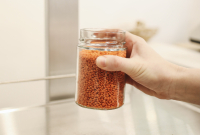Support strong Canadian climate journalism for 2025
The intense impact of the agriculture industry on our climate is no secret. One-quarter of the world’s greenhouse gas emissions result from food production.
Farmers are feeling the impacts of climate change, particularly from droughts and floods. And they’re adopting new practices and expanding old ones to grow food more sustainably.
A buzzphrase for these practices is regenerative agriculture, methods meant to keep the soil healthy while drawing carbon out of the air.
On this week’s episode of Hot Politics, host David McKie talks to farmers who tell us how they have changed the way they grow.
Arzeena Hamir runs an organic farm in B.C., growing almost 50 different fruits and vegetables.
“Farmers can see first-hand how bad it could be with climate change,” says Hamir. “When you are not farming in a climate-friendly way, agriculture can actually be a contributor to greenhouse gas emissions, and I think more and more, we're seeing society is no longer tolerating that type of practice.”

Hamir, who has a background in crop science and sustainable agriculture, says she’s started growing more perennials, plants that live longer than two years, like blackberries or hazelnuts. She’s also using organic fertilizers, switching to organic-based compost, and using a technique called cover cropping on more of her land.
“Regenerative agriculture implies that you are trying to make things better than how you found it. It's not just sustainable. It's improving the carbon in your soil, improving and protecting wetlands and forested lands ... and doing things in a better way,” says Hamir.
Philip Loring, of the University of Guelph, explains the threat of traditional farming methods on our food systems, why more sustainable practices are needed, and what consumers can do.
Lastly, Lesley Kelly, a mother of two who runs a family farm in Saskatchewan, talks about growing the mighty lentil, a plant that has transformed Saskatchewan from being the bread basket of the world to the protein basket. According to Kelly, the lentil is a key player in soil health.
“The really cool thing about lentils is they put that nutrient source back into the soil. Then we're able to use that nutrient source for the next year's crop,” she says. This way, she says she can use less fertilizer, which is good for the environment.
To learn more about how farmers are transforming the way our food is grown, listen to the sixth episode of Hot Politics on Apple Podcast or Spotify.
Hot Politics is made possible by listeners like you. If you’ve supported the podcast already, thank you. If you haven’t, click here to donate what you can to help us keep producing valuable journalism.
Got questions or comments? Email us at [email protected].
You can also follow us on Twitter @NatObserver.






Comments